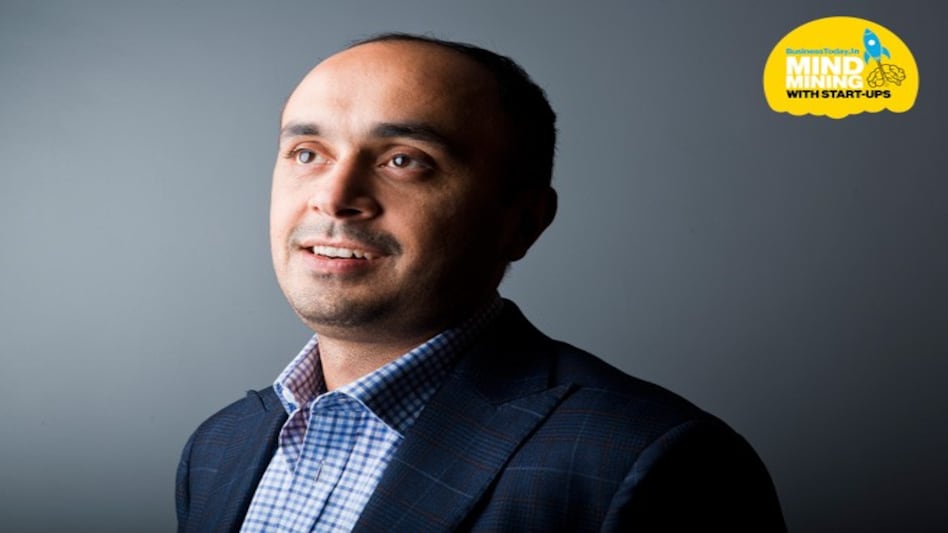 Grofers founder and CEO Albinder Dhindsa (Photo credit - Rachit Goswami)
Grofers founder and CEO Albinder Dhindsa (Photo credit - Rachit Goswami) Grofers founder and CEO Albinder Dhindsa (Photo credit - Rachit Goswami)
Grofers founder and CEO Albinder Dhindsa (Photo credit - Rachit Goswami)Around 2016, grocery e-tailer Grofers was in a soup. The grocery bubble had burst and most companies in the sector realised that fast and furious delivery of fresh produce such as vegetables wasn't an easy affair. Grofers, nevertheless, managed to hold on, tweak its model, become leaner, and thrive.
The company currently is at an annual run rate of $700 million - it hopes to hit nearly $1 billion by early 2020. More than a million customers transact monthly and Delhi-NCR has broken even. The city generates about 35 per cent of the business. Grofers has been more successful in the North Indian belt, all the way from Jaipur to Kolkata.
What explains the turnaround and success in the North? Business Today recently caught up with the founder and CEO Albinder Dhindsa. Amid the debris of grocery e-tailing in 2016, he learnt interesting lessons.
ALSO READ: Mindmining with start-ups: Intrcity, an OYO for smart buses
"The most loyal customers were coming from different areas than we were targeting. We were targeting South Delhi-Gurgaon. But the better customers came from East Delhi, Palam, old Gurgaon," Dhindsa says. "The users were coming from areas where there was no supermarket. They were moving to us because they didn't have an alternative to the local shop," he adds.
People also flocked to Grofers because they got pulses and other commodities in a pack. Local shops often sold them in the open. More than half of these customers were women. And they didn't seem to care much about convenience or speed - the holy mantra for all e-commerce in top tier cities. The company's focus subsequently shifted to hunting for fortune in the lower middle of India's income pyramid.
"Their average household income was less than Rs 6 lakh a year. That became our target group. This is our core focus," the CEO says.
ALSO READ: Mindmining with start-ups: How an Rs 10 drink revolutionised beverages in rural India
Dhindsa did away with express delivery. His target group, he figured out, was planning their monthly stock-up on Grofers and therefore had no problems waiting for a day. "We built for this use case or how to deliver stock-up to these customers. They didn't want to buy fresh from us. They stocked up on atta, chawal, dal, detergent, shampoo, soaps. We stopped fresh deliveries two years ago," he says.
Grofers also fine-tuned the stock it carries, making the assortment leaner. The company currently holds 1,800 stock keeping units (SKUs) pan-India. Three years ago, it held 8,000 SKUs. Fewer items give the firm higher throughput per SKU. "It allows us to get better prices. If I sell four types of ketchups, the customers split. However, if I sell just two ketchups, one brand can be 60 per cent of sales and the other 40 per cent. I can go and bargain for a better price," Dhindsa explains.
More recently, the start-up has tasted success with its private label business as well. So much so, it contributes 40 per cent of its revenues. These products, which range from pastas to green tea, are often cheaper than what the company's customers would find in their local market. "Our green tea is 40 per cent cheaper than any other green tea in the market. We also have biscuits, tissue papers, snacks, almonds. We reverse engineer biscuits so that we can hit the price point our target group can afford. In some cases, we contract manufacturers," Dhindsa says.
ALSO READ: Mindmining with start-ups: How MobiKwik turned around within a year
He works with 200 manufacturing partners.
Meanwhile, Grofers also made investments in the supply-chain. It runs 33 warehouses. The company's private label and other products are sourced from the manufacturer and then stored at the warehouse. The stock is delivered to distribution partners, who finally deliver to end consumers.
Dhindsa's next goal: cracking the market, down south.